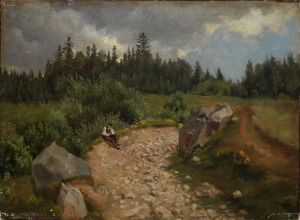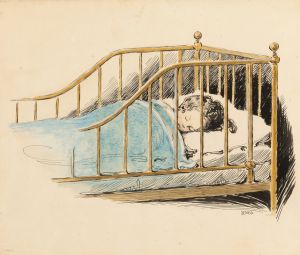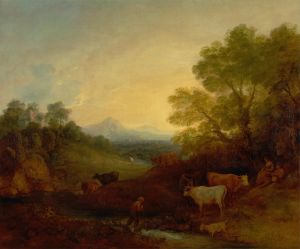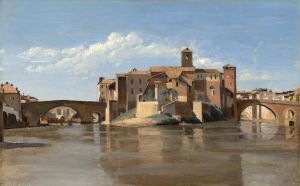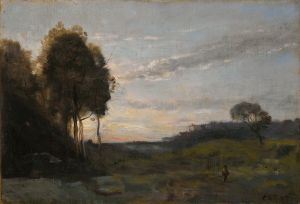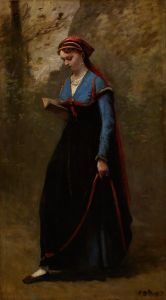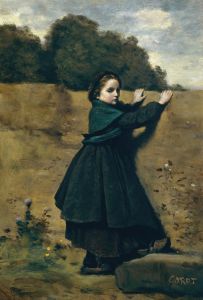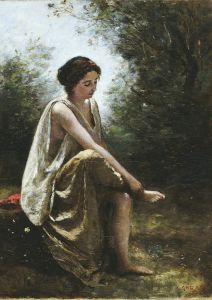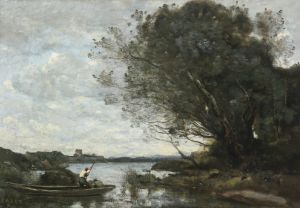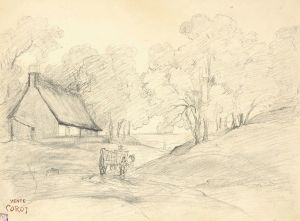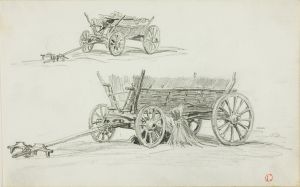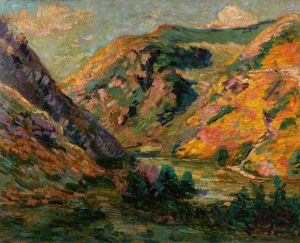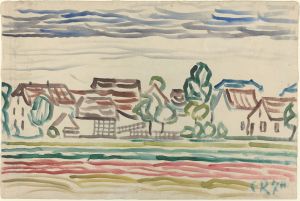
Luzancy, Petites Maisons De Paysans Au Bord De L’eau
A hand-painted replica of Jean-Baptiste-Camille Corot’s masterpiece Luzancy, Petites Maisons De Paysans Au Bord De L’eau, meticulously crafted by professional artists to capture the true essence of the original. Each piece is created with museum-quality canvas and rare mineral pigments, carefully painted by experienced artists with delicate brushstrokes and rich, layered colors to perfectly recreate the texture of the original artwork. Unlike machine-printed reproductions, this hand-painted version brings the painting to life, infused with the artist’s emotions and skill in every stroke. Whether for personal collection or home decoration, it instantly elevates the artistic atmosphere of any space.
Jean-Baptiste-Camille Corot was a pivotal figure in landscape painting, particularly known for his role in bridging the Neo-Classical tradition and the plein-air innovations that would later characterize the Impressionist movement. One of his works, "Luzancy, Petites Maisons De Paysans Au Bord De L’eau," exemplifies his mastery in capturing the serene beauty of rural landscapes.
Corot was born in Paris in 1796 and began his artistic career relatively late, after working in the family textile business. He studied under Achille-Etna Michallon and Jean-Victor Bertin, who were both proponents of the Neo-Classical style. However, Corot's work evolved to embrace a more naturalistic approach, influenced by his travels through Italy and his exposure to the Barbizon School, a group of painters who sought to depict nature with greater realism.
"Luzancy, Petites Maisons De Paysans Au Bord De L’eau" is a testament to Corot's ability to blend his classical training with a more modern sensibility. The painting depicts a tranquil rural scene, likely inspired by the French countryside. Luzancy is a small commune in the Île-de-France region, and the painting captures the essence of its pastoral charm. The composition features small peasant houses by the water, enveloped in a soft, atmospheric light that is characteristic of Corot's mature style.
Corot's technique in this painting reflects his skillful use of light and shadow to create depth and mood. His brushwork is delicate yet assured, allowing him to convey the textures of the landscape and the play of light on water and foliage. The palette is typically muted, with subtle gradations of greens, browns, and grays, punctuated by the occasional highlight that draws the viewer's eye to specific elements within the scene.
This work is also notable for its compositional balance. Corot often employed a harmonious arrangement of elements, guiding the viewer's gaze through the painting in a manner that feels both natural and deliberate. The placement of the houses, the curve of the water's edge, and the framing provided by trees and sky all contribute to a sense of tranquility and order.
Corot's influence on later artists cannot be overstated. His approach to landscape painting, with its emphasis on capturing the transient effects of light and atmosphere, laid the groundwork for the Impressionists. Artists such as Claude Monet and Camille Pissarro admired Corot's work and drew inspiration from his ability to convey the ephemeral beauty of nature.
"Luzancy, Petites Maisons De Paysans Au Bord De L’eau" is a fine example of Corot's contribution to the evolution of landscape painting. It embodies the qualities that made his work so influential: a keen observation of nature, a mastery of light and composition, and a gentle, poetic sensibility that invites viewers to pause and appreciate the quiet beauty of the world around them.





